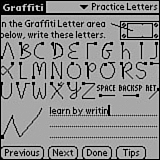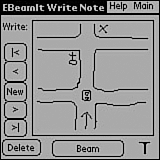note
Some
teenagers will have a natural talent for organizing and scheduling and
won't need much help. Other teens will need to be guided step-by-step. |
Explaining the Basics
You'll probably
have more success focusing your teenager's attention on time management
if you keep the discussion as short as possible. Concentrate on the
basics:
Outline goals.
Explain how knowing what your teenager wants to accomplish—both
now (get a B on the history test) and in the longer term (travel to
Europe after graduation)—will shape the decisions he makes about how to
allocate his time.
Schedule each step.
Explain how to break down each goal into manageable steps that can be scheduled into a planner.
Increase effectiveness.
Explain the benefit of eliminating anything in your teenager's schedule that doesn't serve a purpose.
Increase efficiency.
Explain how to figure out ways to accomplish tasks using less time, money, and energy.
Then make sure your
teenager understands that being a responsible member of the family
requires her to consider the family's schedule when creating her own.
She should compare her schedule to the family's schedule and, if they
are compatible, enter her activities into the family's planner. If the
comparison reveals that a conflict may occur with other planned family
activities, then she must cooperate to resolve the situation before
finalizing her plans. It's only fair that other family members extend
the same courtesy to the teenager if her plans have been entered into
the family's planner first.
Selecting a Planning Tool
So much of getting and staying organized
depends on matching the right tool to the person's organizing style.
You can help your teenager select the right individual planning system
by having him fill out the various self-assessment questionnaires
throughout this book to determine whether he should opt for
note
Perhaps the
ultimate in cutting-edge PDAs are PDA wristwatches. Their availability
is spotty, but searching the Internet for one may be worth the effort if
it will motivate your teenager to organize her schedule.
An electronic or hard-copy planner
A daily, weekly, or monthly format
A horizontal or vertical layout
The use of color
There is still an
overriding factor involved in your teenager's selection of a planner
that a parent can easily overlook: That's the trend factor. A planner
can be the most highly functional system available and perfectly suited
to your teenager's way of thinking, but if it doesn't match with the
current style, your teenager will never use it. In today's world, being
current when it comes to scheduling tools means that the scheduling
device has to be on the cutting edge of technology. Even if all
indicators point to your student benefiting from a paper planner, your
teenager probably will want—almost need—to have a PDA. Along those
lines, smartphones—cell phones that also include wireless Internet
access and PDA operating systems—are growing in popularity.
caution
If other members of
your family also have PDAs, make sure that they all run the same
operating system so that you can share software and synchronize some of
your information. Plenty of smartphones run the Palm or Microsoft Pocket
PC operating systems, but the majority of them run the Symbian
operating system, which is generally not available for standalone PDAs.
Should you be frustrated
if your teenager insists on a digital planner when you believe a paper
planner would be a better choice? Not really. Because your teenager
likes the tool, he'll spend the extra time needed to make it work for
him. In the meantime, he'll be learning the fundamentals of time
management that he can use no matter what type of planner he chooses to
use in the future.
You can help your young
adult get the most out of her digital device by encouraging her to use
the features that work best with her learning style. Here are some
examples:
If she's
the type of person who remembers things better by writing them down,
have her master entering information into her PDA using the graffiti
writing tool. (See Figure 1.)

If she learns better from illustration rather than the written word, make sure that her PDA contains drawing software. (See Figure 2.)

If she forgets to look at her planner for information, teach her how to set the PDA's alarm to remind her to do things.
note
PDAsoftnet's
Student Log V 1.0 software for the Palm OS includes a sketch pad for
quick drawing along with the ability to sort the student's schedule by
subject or day. Both PC and Mac computer users can download a free trial
version. Suggested retail: $9.99. Website: www.pdasoftnet.com |
As a parent, you must
accept that if a trendy organizing gadget wasn't a good fit in the
beginning, its novelty will wear off and your teenager will need to
select a scheduling planner that's a more natural match. Remember that,
despite their name, middle school planners are often ideal through all
of a student's school years.
You can continue to support your teenagers in their move toward
independence and responsibility by helping them understand that finding
the right planner, despite peer and marketing pressures, is a personal
choice.
Enter all applicable deadlines into your family's and your student's planners
Schedule and plan college campus visits
File your income tax returns as early as possible in your highschooler's senior year
Use the Internet to locate colleges and scholarship opportunities
Block out several days for packing and moving to campus